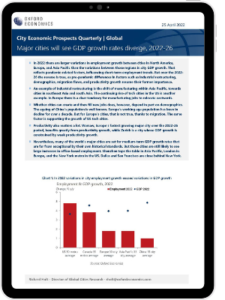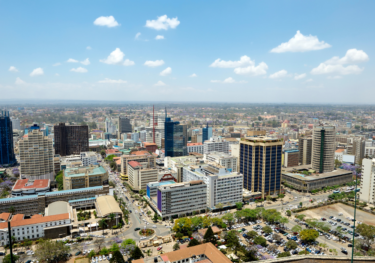Major cities will see GDP growth rates diverge, 2022-26
 In 2022 there are larger variations in employment growth between cities in North America, Europe, and Asia Pacific than the variations between those regions in city GDP growth. That reflects pandemic-related factors, influencing short-term employment trends. But over the 2022-26 the reverse is true, as pre-pandemic differences in factors such as industrial restructuring, demographics, migration flows, and productivity growth resume their former importance.
In 2022 there are larger variations in employment growth between cities in North America, Europe, and Asia Pacific than the variations between those regions in city GDP growth. That reflects pandemic-related factors, influencing short-term employment trends. But over the 2022-26 the reverse is true, as pre-pandemic differences in factors such as industrial restructuring, demographics, migration flows, and productivity growth resume their former importance.
What you will learn:
- An example of industrial restructuring is the shift of manufacturing within Asia Pacific, towards cities in southeast Asia and south Asia. The continuing rise of tech cities in the US is another example.
- Whether cities can create and then fill new jobs depends in part on demographics. Europe’s working age population has been in decline for over a decade. But for Europe’s cities, that is not true, thanks to migration.
- Productivity also matters a lot. Warsaw, Europe’s fastest growing major city over the 2022-26 period, benefits greatly from productivity growth.
Related Posts

Post
Africa: The long-term outlook for sub-Saharan African cities
Sub-Saharan cities will lead the way for GDP growth, but similarly strong demographic changes will limit gains in GDP per person, reaffirming the region’s position at the lower end of the development spectrum.
Find Out More
Post
Rise of new megacities will drive global urban growth
The population of the world's 1,000 largest and most important global cities is forecast to increase by more than half a billion by 2050. However, this urban demographic growth is not equally distributed across the world's cities.
Find Out More